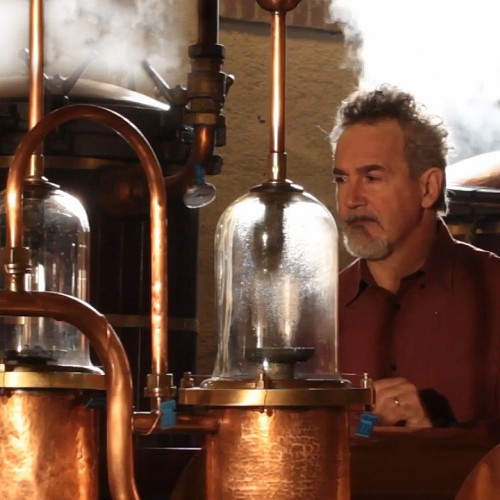9/20/2023 | Discovering Grappa
How Grappa is made
How Grappa is made
Discovering Grappa with Jacopo Poli.
To obtain a great Grappa, three things are necessary: a high quality raw material a handicraft alembic a great conductor, the Grappa master.
At the Poli Distillery since 1898, we use a steam still. We also have a bain-marie still and a vacuum bain-marie still. Regardless of the still type, the concept and criteria of distilling is the same.
The raw material
Grappa is the only spirit in the world obtained by distilling a solid raw material, the grape skin, namely what remains after the grape is pressed to make wine. This raw material is called grape marc.
A top quality grape marc is basically a fresh and healthy grape marc.
The grape marc’s freshness is the crucial key for a high quality Grappa. The pomace must be immediately transferred from the cellar to the distillery, obtaining this way a Grappa boasting the grape’s scents.
It is important to say that the pomace must be fermented, namely the sugar must be transformed in alcohol, thanks to particular microorganisms called yeasts.
The Alembic
The fermented pomace is ready to be distilled and it is in fact loaded inside these caldrons and placed on to pierced-bottom baskets, allowing the steam blown into the bottom of the boiler to go through the pomace.
Generally, inside a pot there are four baskets, each one holding 100 kilos pomace. Out of 100 kg it is possible to obtain 2-4 Grappa liters at full grade, 75-80% alc./vol.
The steam crossing the pomace is enriched with aromatic elements and the grape skin’s alcohol; it will then exit the pot to end at the base of a small distillation column, whose task is to concentrate the alcohol steam.
At the column’s base we barely have 25% alc./vol., but, being the alcohol more volatile than water, it will rise and overtake some obstacles placed inside the distillation column, called “distillation plates”.
The alcohol part, with a boiling point lower than the water part, will pass from plate to plate, concentrating on the column’s top, with an alcohol content of about 75% alc./vol.
At this point, the steams will flow into a serpentine surrounded by cold water, where the steam will be condensed into liquid and we will now obtain Grappa.
The Grappa master
At this point, the grappa master must perform an important operation: separating the first part of Grappa exiting the alembic, the head and just store the central portion, the hearth; the final part, the tail, will be discarded, too.
Head and tail will be eliminated, while the hearth, rich in ethyl alcohol and fine aromatic elements, will pass through a fiscal counter, then will flow in the storage tank.
Grappa types
At this point, once obtained the raw Grappa, we have three possibilities: the first one is to leave Grappa in steel tanks for one year or two: in this case the Grappa will boast the scents of the grape it was originated from.
The second chance is to store the Grappa in small wooden barrels, giving to the distillate a pleasant amber note and some spicy aromas.
The third possibility is to create infusions with vegetable substances, for example licorice roots, rue sprigs, or blueberries.
Each one of these botanicals will give the distillate its typical aromatic note.
We have three types of Grappa: young, aged and with natural infusion. Regardless of the type, we will have to lower the alcohol level to the right percentage, by adding distilled water. Then, it will have to be filtered to be finally ready for filling and tasting.


